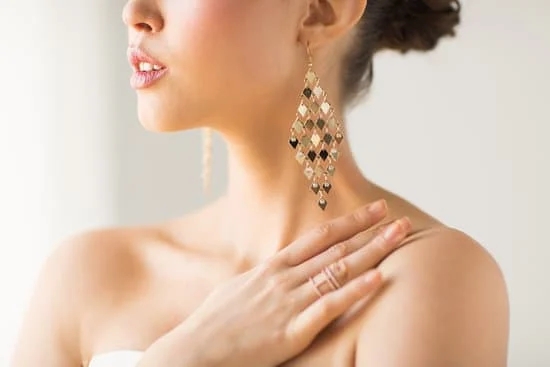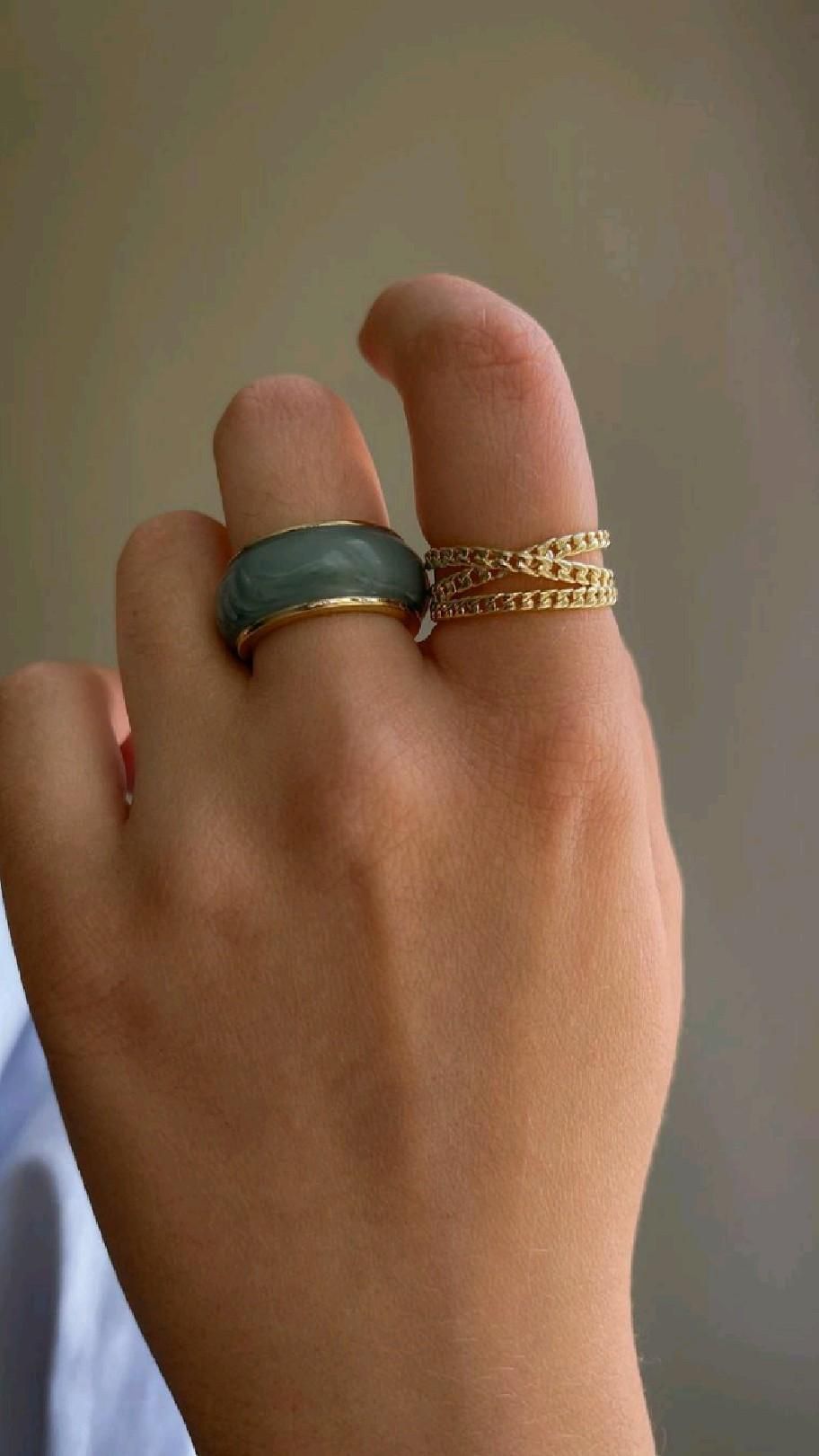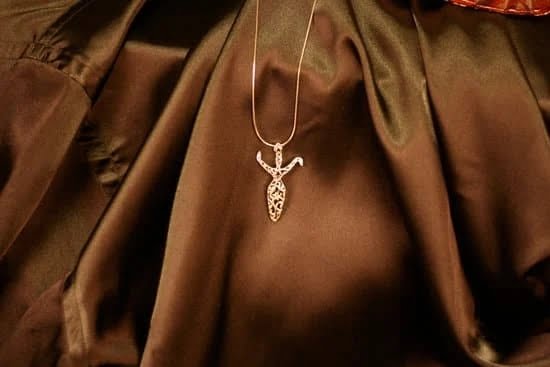Fashion jewelry is a booming industry that encompasses a wide range of accessories made from various materials and adorned with unique designs. From necklaces and bracelets to earrings and rings, fashion jewelry serves as the perfect complement to any outfit, allowing individuals to express their personal style and enhance their overall look.
In this article, we will delve into the world of fashion jewelry, exploring its rich history, current trends, key players in the industry, manufacturing and distribution processes, global market reach, and its economic impact.
Dating back centuries, fashion jewelry has played a significant role in human adornment. Initially made from natural materials such as shells, stones, and animal bones, it has evolved alongside society’s changing tastes and preferences.
Today’s fashion jewelry incorporates a wide array of materials including metal alloys, gemstones, pearls, glass beads, plastics, and even wood or leather. The creativity and craftsmanship involved in making fashion jewelry have transformed it into an art form that allows both designers and wearers to express themselves.
The popularity of fashion jewelry has skyrocketed over the years due to its accessibility and affordability compared to fine jewelry. Fashion-forward individuals can readily find unique pieces that cater to their personal style without breaking the bank.
Furthermore, the rise of social media platforms has greatly contributed to its growing demand as influencers showcase their favorite accessories on various online platforms. As a result, consumers are increasingly turning to fashion jewelry not only for everyday wear but also for special occasions.
Stay tuned as we journey through the dynamic world of fashion jewelry – exploring its captivating history and evolution over time, delving into its popularity among diverse consumer segments today, uncovering the key players driving innovation in design and production processes. We will also discuss the latest trends shaping the industry as well as its economic impact globally.
Ultimately, we aim to provide you with comprehensive insights into the fascinating world of fashion jewelry while shedding light on sustainability efforts being made within the industry. So fasten your seatbelts and enjoy this exciting exploration into the realm of fashion jewelry.
The History and Evolution of Fashion Jewelry
Fashion jewelry has a long and fascinating history that spans centuries. From ancient civilizations to modern times, the evolution of fashion jewelry reveals not only changing trends in adornment but also cultural influences and technological advancements. This section explores the history of fashion jewelry, tracing its origins and development throughout different eras.
Origin and Early Forms
The origins of fashion jewelry can be traced back to ancient civilizations such as Egypt, Mesopotamia, and India. These early forms of jewelry were often made from natural materials like shells, beads, stones, and bones. They were used not only for personal adornment but also as symbols of social status or religious significance.
As civilizations progressed, so did the complexity and craftsmanship of jewelry. The Ancient Egyptians, renowned for their mastery in goldsmithing, created exquisite pieces adorned with precious gemstones and intricate designs. In Ancient Rome, signet rings became popular accessories that denoted social status and were used as seals on important documents.
The Renaissance to Modern Times
During the Renaissance period, Europe experienced a surge in artistic creativity that influenced the design of fashion jewelry. Jewelry makers began incorporating gemstones into their creations, creating highly ornate and elaborate designs. Pearls became particularly fashionable during this time.
In the 18th century, technological advancements such as machine-made chains revolutionized the production of jewelry. This democratized access to fashionable accessories beyond just the elites. Industrialization in the 19th century further transformed the industry with mass production techniques facilitating greater affordability.
In more recent times, fashion jewelry has evolved to reflect changing attitudes towards self-expression and individuality. Designers have experimented with various materials such as plastic, glass beads, resin, and even recycled objects to create unique pieces that cater to different tastes and budgets.
Overall, understanding the history of fashion jewelry provides valuable insights into how it has developed over time to become a significant part of the fashion industry today. By appreciating its roots, we can better appreciate the craftsmanship, cultural influences, and innovation that have shaped this vibrant industry.
Exploring the Popularity and Demand for Fashion Jewelry
Fashion jewelry, also known as costume jewelry or imitation jewelry, has gained immense popularity in recent years. This section will delve into the reasons behind the rising demand for fashion jewelry and explore its popularity among consumers.
Changing Consumer Preferences
One of the primary factors contributing to the popularity of fashion jewelry is the changing preferences of consumers. In today’s fast-paced world, people are looking for trendy and affordable accessories to complement their outfits.
Fashion jewelry offers a wide range of options in terms of design, materials, and styles that cater to different consumer tastes. Unlike fine jewelry, which is often associated with higher price points and a sense of formality, fashion jewelry provides an opportunity for individuals to experiment with their personal style without breaking the bank.
Flexible Fashion Statements
Another reason behind the growing demand for fashion jewelry is its ability to make versatile fashion statements. With a wide variety of designs available, individuals can mix and match pieces according to their mood, occasion, or outfit. Fashion jewelry allows for self-expression and creativity by enabling individuals to accessorize in unique ways. Additionally, due to its affordability compared to fine jewelry, people can afford to own multiple pieces and switch them out regularly based on their preferences.
Accessibility and Availability
Fashion jewelry has become increasingly accessible to consumers through various channels including online retailers, brick-and-mortar stores, and even social media platforms. With just a few clicks or a walk down the street, individuals can find a plethora of options at different price points that suit their budget. The accessibility and availability of fashion jewelry have contributed significantly to its popularity by making it easily accessible for consumers worldwide.
Key Players and Brands in the Fashion Jewelry Industry
The fashion jewelry industry is home to several key players and brands that have had a significant impact on the market. These industry leaders have created a strong presence by consistently delivering innovative designs, high-quality products, and exceptional customer service. Let’s take a closer look at some of the top players in the fashion jewelry industry:
- Swarovski: Known for its precision-cut crystals, Swarovski has become synonymous with luxury and elegance in the fashion jewelry industry. This Austrian brand offers a wide range of products including necklaces, earrings, bracelets, and rings that are adorned with their signature crystals.
- Pandora: A Danish brand that revolutionized the charm bracelet trend, Pandora has gained immense popularity for its customizable jewelry pieces. With a vast selection of charms and bracelets to choose from, customers can create personalized accessories that reflect their individual style.
- Tiffany & Co.: Established in 1837, Tiffany & Co. is an iconic luxury jewelry brand that has stood the test of time. While predominantly known for their engagement rings and fine jewelry, Tiffany & Co. also offers a range of fashion jewelry that showcases their exquisite craftsmanship.
- Kendra Scott: Founded by designer Kendra Scott in 2002, this American brand focuses on creating affordable luxury accessories with a unique blend of natural gemstones and timeless designs. Known for their statement earrings and colorful pieces, Kendra Scott has gained a devoted following among fashion-conscious consumers.
These are just a few examples of the key players in the fashion jewelry industry. Other noteworthy brands include Alex and Ani, BaubleBar, Kate Spade New York, and Chopard. These brands have not only established themselves as trendsetters but have also contributed to shaping the overall landscape of the fashion jewelry market.
| Brand | Description |
|---|---|
| Swarovski | Austrian brand known for precision-cut crystals and luxury designs. |
| Pandora | Danish brand that popularized customizable charm bracelets. |
| Tiffany & Co. | Iconic luxury brand renowned for fine jewelry and engagement rings. |
| Kendra Scott | American brand offering affordable luxury accessories with natural gemstones. |
Understanding the Manufacturing and Distribution Process of Fashion Jewelry
Manufacturing and distribution are critical aspects of the fashion jewelry industry. The process involves various stages from design conception to the final product reaching consumers. This section will delve into the key steps involved in manufacturing and distributing fashion jewelry.
The journey of a fashion jewelry piece begins with design conception. Designers draw inspiration from trends, cultural influences, and their creativity to develop unique designs. Once the design is finalized, it moves on to the production stage. Fashion jewelry is typically mass-produced using various materials such as metals, gemstones, glass, acrylics, and plastics.
Manufacturing involves several techniques such as casting, soldering, engraving, setting stones, and plating to bring the designs to life. Skilled artisans and craftsmen play a crucial role in this process, ensuring that each piece meets quality standards.
After the manufacturing stage is complete, fashion jewelry goes through a thorough quality control check for any defects or imperfections. Once approved for quality assurance, it moves on to packaging and labeling.
Distribution plays a significant role in making fashion jewelry accessible to consumers. Several channels are utilized for distribution, including retail stores (both physical and online), wholesalers, distributors, and direct sales from manufacturers. Retail stores can range from high-end boutiques to department stores where customers can browse and purchase fashion jewelry.
Online platforms have also become increasingly popular for purchasing fashion jewelry due to their convenience and wide range of options available.
Overall, understanding the manufacturing process helps consumers appreciate the craftsmanship behind each piece of fashion jewelry they own while realizing the intricate process involved in bringing these accessories to market. Additionally, having knowledge about distribution channels enables consumers to access their desired pieces easily while also giving insight into how brands ensure their products reach a wider audience efficiently.
Analyzing the Latest Trends and Innovations in Fashion Jewelry
Trends and innovations are constantly shaping the world of fashion jewelry. In this section, we will analyze some of the latest trends and innovations that have emerged in the industry.
One of the standout trends in fashion jewelry is the rise of sustainable and eco-friendly materials. As consumers become more conscious about their impact on the environment, there is a growing demand for jewelry made from recycled or ethically sourced materials. This trend has led to an increase in the use of materials such as recycled metals, ethically mined gemstones, and even alternative materials like wood or bamboo.
Another trend that has gained popularity in recent years is personalized jewelry. People want to wear pieces that reflect their individuality and personal style. This has led to a surge in customized and personalized jewelry options, such as nameplate necklaces, initial pendants, and birthstone rings. Technology has played a key role in this trend, with advancements in 3D printing allowing for more intricate designs and personalized engravings.
In terms of innovations, technology continues to play a significant role in shaping the fashion jewelry industry. One notable innovation is augmented reality (AR) technology being used by some brands to enhance the shopping experience. With AR, customers can virtually try on different pieces of jewelry using their smartphones or tablets. This immersive experience allows them to see how a piece looks on them before making a purchase, leading to increased customer satisfaction.
Overall, analyzing the latest trends and innovations in fashion jewelry reveals an industry that is constantly evolving to meet consumer demands. From sustainable materials to personalized designs and technological advancements like AR, these trends shape not only the products themselves but also how they are experienced by customers.
| Trends | Innovations |
|---|---|
| Sustainable materials | Augmented Reality (AR) technology |
| Personalized jewelry | 3D printing for intricate designs |
Unveiling the Global Market of Fashion Jewelry
The global market of fashion jewelry is a thriving industry that has experienced significant growth in recent years. With its wide range of designs, affordability, and versatility, fashion jewelry has become increasingly popular around the world. In this section, we will take a closer look at the global market of fashion jewelry, exploring its size, key players, and consumer trends.
The global market for fashion jewelry has witnessed tremendous growth in the past decade. According to Market Research Future, the market is projected to reach a value of $56.94 billion by 2023, growing at a CAGR of 7.50% during the forecast period.
This can be attributed to several factors such as changing consumer preferences towards affordable and trendy accessories, increasing disposable income levels in emerging economies, and the rise of e-commerce platforms that make it easier for consumers to access a wide variety of fashion jewelry options.
When it comes to the key players in the global market of fashion jewelry, there are numerous brands that have established themselves as leaders in the industry. These include Swarovski AG, Pandora Jewelry LLC, Tiffany & Co., H&M Hennes & Mauritz AB (H&M), and Richemont Group. These companies have successfully captured a significant share of the market through their innovative designs, brand reputation, and effective marketing strategies.
Consumer trends also play a crucial role in shaping the global market of fashion jewelry. One notable trend is the growing popularity of sustainable and ethically sourced fashion jewelry. Consumers are becoming more conscious about environmental issues and ethical practices within the industry. As a result, many brands are focusing on using recycled materials or ethically sourced gemstones in their products to appeal to these conscientious consumers.
Economic Impact and Revenue Generation in the Fashion Jewelry Industry
The fashion jewelry industry has a significant economic impact and is a major player in revenue generation. This section will explore the various aspects that contribute to the economic success of the industry, including sales figures, job creation, and market value.
- Sales Figures: The global fashion jewelry market has experienced steady growth in recent years. According to a report by Grand View Research, the market size was valued at $25.2 billion in 2020 and is projected to reach $42.5 billion by This highlights the high demand for fashion jewelry and its potential for generating substantial revenue.
- Job Creation: The fashion jewelry industry plays a vital role in job creation, both directly and indirectly. From designers and manufacturers to retail sales personnel, there are numerous employment opportunities available within the industry. Additionally, ancillary services such as advertising, marketing, and logistics further contribute to job creation.
- Market Value: The market value of the fashion jewelry industry is influenced by factors like brand reputation, quality of materials used, design innovation, and consumer preferences. Major players in the industry are able to command higher prices due to their established brand image and exclusive designs. However, there is also a thriving market for affordable fashion jewelry that caters to a wider customer base.
Overall, the economic impact of the fashion jewelry industry is undeniable. It provides job opportunities worldwide while satisfying the demand for stylish accessories at various price points. As consumer preferences continue to evolve and new trends emerge, it is expected that the revenue generated by this industry will continue to grow steadily in the coming years.
Sustainability and Ethical Practices in the Fashion Jewelry Industry
The fashion industry as a whole has long been criticized for its negative environmental and social impacts. From fast fashion to the exploitation of workers, these issues are particularly prevalent in the production of clothing and accessories. However, in recent years, there has been a growing movement towards sustainability and ethical practices in the fashion industry, including the world of fashion jewelry.
Sustainability is becoming an increasingly important aspect of the fashion jewelry industry. Consumers are now more aware of the environmental impact of their purchasing decisions and are demanding more sustainable options. Many fashion jewelry brands have responded by incorporating eco-friendly materials into their designs, such as recycled metals or ethically sourced gemstones. Additionally, some brands are taking steps to reduce waste by implementing recycling programs or using sustainable packaging materials.
Ethical practices are another important consideration in the fashion jewelry industry. This includes ensuring fair wages and safe working conditions for workers throughout the supply chain. Some brands are partnering with organizations that certify fair trade or responsible sourcing practices to ensure that their products are made under ethical conditions. Transparency is also key, with consumers increasingly wanting to know where their jewelry comes from and how it was made.
Overall, sustainability and ethical practices are essential for the future success of the fashion jewelry industry. Consumers want reassurance that they can enjoy stylish accessories without contributing to environmental degradation or human rights abuses.
By prioritizing sustainability and ethics, brands can not only attract conscientious consumers but also contribute to positive change within the fashion industry as a whole. It is clear that sustainability and ethical practices are no longer just trends; they have become essential values that guide responsible businesses in the world of fashion jewelry.
Frequently Asked Questions
What type of industry is jewelry in?
Jewelry is part of the luxury goods industry, specifically the accessories sector. It falls into the category of personal adornments and encompasses various types of ornaments, including necklaces, bracelets, earrings, rings, and more.
The jewelry industry caters to both men and women, offering a wide range of styles, materials, and price points to cater to different tastes and budgets. Whether it’s fine jewelry made with precious metals and gemstones or fashion jewelry crafted with non-precious materials like glass or plastic, this industry plays a significant role in adding sparkle and elegance to people’s attire.
How big is the fashion jewelry industry?
The fashion jewelry industry is massive in size and continues to thrive globally. Although precise figures can vary depending on various sources and methodologies used for measurement, it is estimated to be worth billions of dollars annually.
The affordability and versatility of fashion jewelry make it accessible to a large segment of consumers who desire trendy accessories at reasonable prices. With the rise of e-commerce platforms facilitating online sales along with brick-and-mortar stores and boutiques worldwide, the fashion jewelry market has experienced consistent growth over the years.
What is fashion jewelry also known as?
Fashion jewelry is also known as costume jewelry or imitation jewelry. Unlike fine jewelry that utilizes precious metals such as gold or platinum paired with real gemstones like diamonds or rubies, fashion jewelry incorporates less expensive materials while still providing an aesthetic appeal. Fashion pieces often mimic certain styles or designs of fine jewelry but are typically made using base metals like brass or zinc alloy combined with artificial gemstones or other decorative elements.
This allows customers to achieve a fashionable look without the high cost associated with fine jewelry options. While fashion jewelry may not possess the same intrinsic value as its high-end counterparts, it offers affordability and flexibility for consumers who wish to change their accessories more frequently according to evolving trends without breaking the bank.

Welcome to my jewelry blog! My name is Sarah and I am the owner of this blog.
I love making jewelry and sharing my creations with others.
So whether you’re someone who loves wearing jewelry yourself or simply enjoys learning about it, be sure to check out my blog for insightful posts on everything related to this exciting topic!





